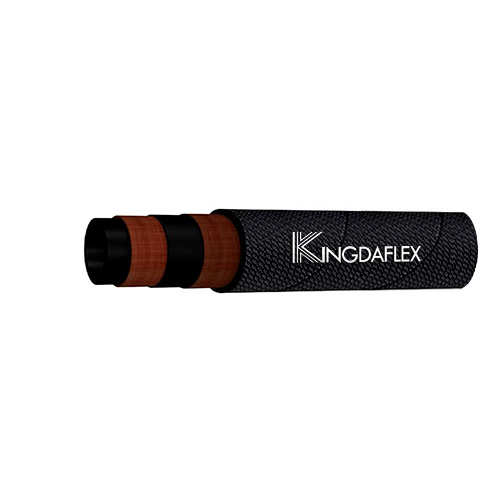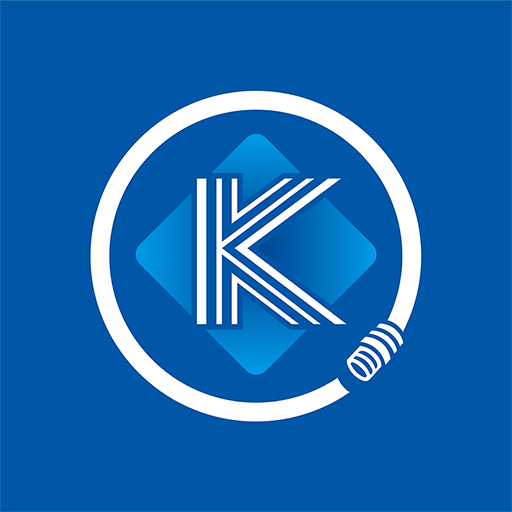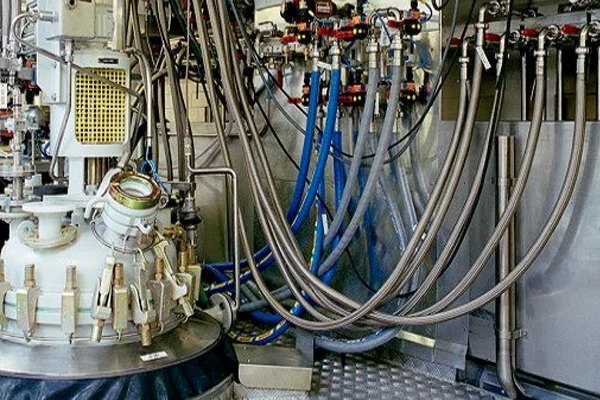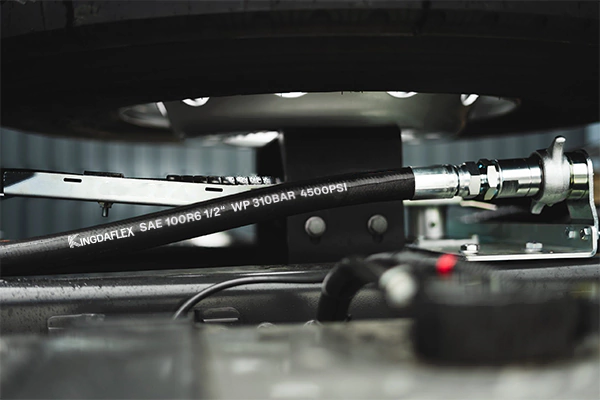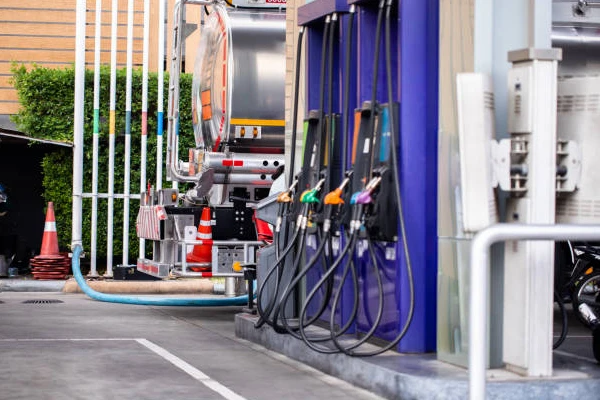Choosing the right cleaning method is crucial for any surface preparation project. While both sandblasting and power washing are effective for cleaning surfaces, they use different techniques and are suited for different tasks. Understanding the distinct differences between these two methods will help you decide which one is best for your specific needs, whether you’re tackling a small home project or a large-scale industrial job.
This article will explore the core differences in how sandblasting and power washing work, what they’re used for, and the unique advantages and disadvantages of each. By the end, you’ll have a clear understanding of which method provides the most effective and efficient solution for your project, ensuring a successful and professional result every time.
What is Sandblasting?
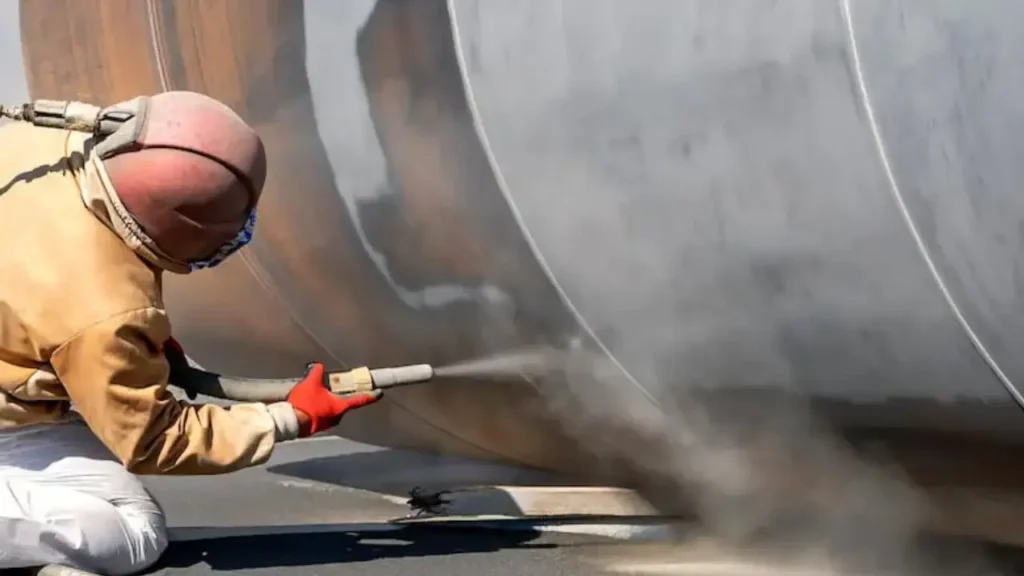
Sandblasting, also known as abrasive blasting, is a powerful surface preparation technique that involves forcibly propelling a stream of high-velocity abrasive material, such as sand, glass beads, or steel grit, against a surface. This process is driven by compressed air, which blasts the media out of a nozzle to clean, smooth, roughen, or shape a surface.
It is highly effective for removing tough contaminants like rust, old paint, and grime from hard surfaces like metal, concrete, and brick, making it a go-to method for industrial cleaning, automotive restoration, and construction projects.
What is Sandblasting Used for?
Sandblasting, or abrasive blasting, is a versatile and powerful technique used for a wide range of surface preparation, cleaning, and finishing tasks. Its primary function is to propel a stream of abrasive media at high velocity to remove contaminants, old coatings, or rust. This process is crucial in various industries where a clean, properly prepared surface is necessary for subsequent treatments like painting or coating.
- Surface Preparation: A primary use is to create a specific surface profile on metal, concrete, or other materials. This profile, or “anchor pattern,” improves the adhesion and longevity of new paint, powder coating, or other protective layers.
- Paint and Rust Removal: Sandblasting is exceptionally effective at stripping away old, peeling paint and stubborn rust from metal surfaces, such as those on vehicles, bridges, and industrial machinery. This is often the fastest and most efficient way to get back to the bare material.
- Restoration: It is widely used to restore and clean a variety of surfaces. This includes removing graffiti from brick walls, cleaning and refreshing the surface of concrete, and stripping grime and old finishes from wooden furniture to restore its original look.
- Etching and Finishing: Beyond cleaning, sandblasting is also used for decorative and finishing purposes. It can be used to etch intricate designs into glass, stone, or wood, or to create a matte or satin finish on metal parts for both aesthetic and functional reasons.
Sandblasting Hose Benefits
Sandblasting hoses are essential components of any abrasive blasting system, offering significant benefits that contribute to efficiency, safety, and longevity. They are specifically engineered to handle the harsh demands of propelling abrasive media at high velocity and pressure.
- Exceptional Abrasion Resistance: The inner tube of the hose is constructed from a specialized, highly durable rubber that can withstand the constant, high-speed flow of abrasive materials like sand, steel grit, and glass beads, minimizing wear and extending the hose’s lifespan.
- High-Pressure Handling: With multiple layers of textile or steel wire reinforcement, these hoses are built to handle the intense pressures from air compressors, ensuring a steady and reliable flow of media without the risk of bursting or kinking.
- Enhanced Safety Features: Many sandblasting hoses have anti-static properties built into the inner layer, which safely dissipates static electricity generated by friction, preventing shocks and sparks that could ignite flammable materials in the work environment.
- Flexibility and Maneuverability: Despite their robust construction, these hoses offer good flexibility, allowing operators to easily maneuver the nozzle in confined or hard-to-reach areas, which improves work efficiency and operator comfort.
- Weather and Ozone Resistance: The outer cover of the hose is designed to resist environmental factors such as UV radiation, ozone, and general weathering, ensuring the hose remains durable and functional even in rugged outdoor or industrial settings.
What is Power Washing?
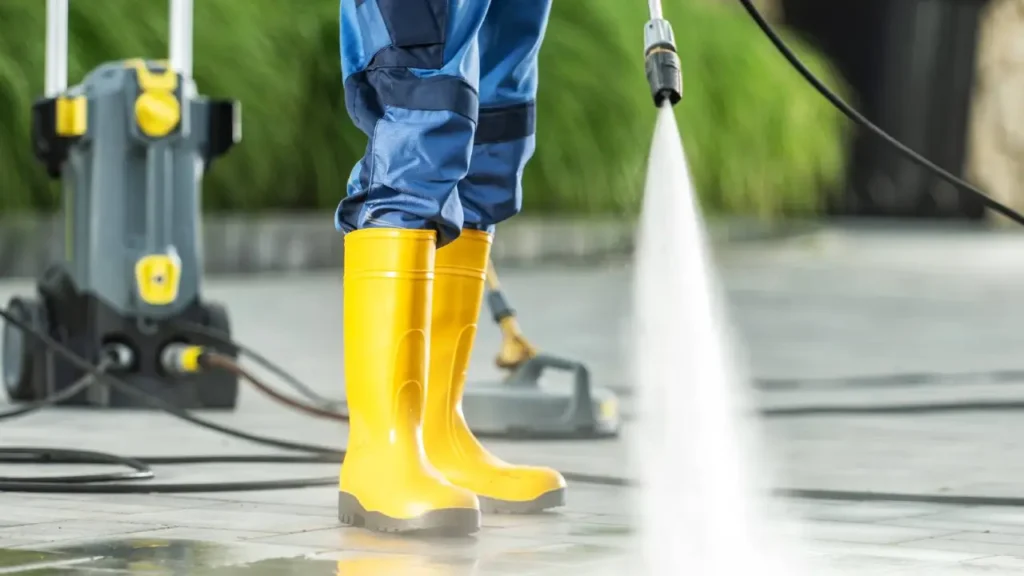
Power washing is a cleaning method that uses a high-pressure stream of hot water to remove dirt, grime, and other unwanted substances from various outdoor surfaces. It works by combining the force of high-pressure water with heat, making it especially effective at breaking down stubborn substances like grease, oil, mold, and mildew.
While often used interchangeably with pressure washing, the key difference is the heated water, which provides a deeper and more sanitizing clean for driveways, concrete, siding, and other exterior areas.
What is Power Washing Used for?
Power washing is a versatile and effective cleaning method that utilizes a high-pressure stream of heated water to remove a wide range of contaminants from various surfaces. It is primarily used for maintenance and aesthetic cleaning, as the heated water is highly effective at breaking down and sanitizing tough substances like grease, oil, and organic growth.
- Residential Exterior Cleaning: Power washing is a staple for cleaning the exterior of homes, including siding, decks, patios, driveways, and fences. It efficiently removes dirt, mold, mildew, algae, and grime, instantly improving a property’s curb appeal.
- Commercial Building Maintenance: It is commonly used on commercial properties to clean building exteriors, sidewalks, parking lots, and storefronts. This helps maintain a clean, professional appearance and ensures compliance with sanitation standards.
- Heavy Equipment and Vehicle Washing: The heated, high-pressure water is perfect for cleaning machinery, fleet vehicles, and agricultural equipment. It easily cuts through tough grease, mud, and oil buildup, extending the life and performance of the equipment.
- Sanitation and Hygiene: In industries like food processing and healthcare, power washing is used to sanitize floors, walls, and equipment. The combination of high pressure and heat effectively eliminates bacteria, ensuring a sterile and safe environment.
- Graffiti and Stain Removal: Power washing can be used to remove graffiti, chewing gum, and other stubborn stains from public areas like sidewalks, walls, and bridges. It offers a powerful solution without the need for harsh chemicals.
Power Washing Hose Benefits
Power washing hoses are designed to withstand the unique demands of high-pressure cleaning applications. Unlike standard garden hoses, these are built with reinforced materials to safely contain the extreme water pressure, ensuring a steady and powerful flow to the nozzle. Their construction is critical for both performance and safety.
- High-Pressure Resistance: The hose is engineered with multiple layers of durable reinforcement, such as steel wire or textile braid, which allows it to safely handle and contain the immense pressure generated by power washers without bursting or rupturing.
- Abrasion-Resistant Cover: The outer cover is made from tough, weather-resistant materials to protect the hose from scuffs, cuts, and environmental damage. This durability ensures a long service life even with frequent use on rough surfaces.
- Flexibility and Kink Resistance: Despite being reinforced, these hoses are designed to remain flexible and resist kinking during use. This feature allows for easy maneuverability around obstacles, preventing flow interruptions and making the job more efficient.
- Chemical and Oil Resistance: Many professional-grade power washing hoses feature an inner tube and outer cover that are resistant to a variety of cleaning chemicals and oils. This prevents the hose from degrading when used with detergents or degreasers.
Sandblasting vs Power Washing
While both sandblasting and power washing are used for surface preparation, they are fundamentally different in their methods, applications, and results. One uses abrasive media, and the other uses high-pressure water. The best choice depends entirely on the specific job you need to accomplish.
Method of Action
Sandblasting uses compressed air to blast a stream of abrasive media, such as sand, glass beads, or steel grit, at high velocity against a surface. This physical abrasion strips away contaminants and coatings. It is a dry, highly aggressive method that relies on the friction and impact of the media to clean or shape the surface.
Power washing, conversely, uses a high-pressure stream of heated water. It relies on the force of the water and heat to loosen and remove dirt, grime, mold, and other buildup. It is a much gentler, non-abrasive method that washes away surface-level contaminants without altering the surface itself.
Surface Suitability
Sandblasting is best suited for hard, durable surfaces that can withstand intense abrasion. It is the ideal choice for preparing metal surfaces, such as car bodies, industrial machinery, and ship hulls, as it effectively removes rust and old paint. It’s also used on concrete and masonry to expose aggregate or remove tough coatings.
Power washing is excellent for cleaning softer or more delicate surfaces that would be damaged by abrasive media. It is the preferred method for residential and commercial exterior cleaning, including siding, decks, fences, and sidewalks. It effectively removes dirt and organic growth without causing etching or surface damage.
Effectiveness and Results
Sandblasting delivers a very thorough and uniform cleaning. It not only removes contaminants but also creates a “profile” on the surface, which is a microscopic roughness that helps new coatings or paint adhere better. This makes it superior for applications where a new, long-lasting finish is required.
Power washing is highly effective for cleaning and maintenance tasks but does not create a surface profile. While it can remove loose paint, it’s not designed to strip off stubborn layers or rust. Its primary goal is to clean a surface rather than prepare it for a new coating.
Environmental and Safety Factors
Sandblasting, especially with traditional sand, can create significant amounts of hazardous dust, posing a risk of silicosis and other respiratory issues. It also requires extensive cleanup of the spent media. Safety precautions like respirators and full-body protection are essential for the operator.
Power washing is generally considered more environmentally friendly as it primarily uses water, though the runoff can contain pollutants from the cleaned surface. It produces no hazardous dust, making it a safer option for both the operator and the surrounding environment. However, the high pressure can still cause injury.
Cost and Accessibility
Sandblasting equipment is typically more expensive and requires specialized knowledge to operate safely and effectively. It is a more involved process with higher costs for media and containment. For this reason, it is often a service provided by professionals.
Power washing equipment is widely available for rent or purchase at a lower cost. It is a much more accessible and user-friendly option for homeowners and small businesses, making it a popular choice for DIY projects and regular maintenance.
| Aspect | Sandblasting | Power Washing |
| Method | Propels abrasive media with compressed air | Propels high-pressure heated water |
| Primary Use | Heavy-duty cleaning, rust/paint removal, surface profiling | General cleaning, removing dirt, mold, and mildew |
| Suitable Surfaces | Metal, concrete, brick, stone | Siding, decks, driveways, vehicles |
| Surface Impact | Abrasive; can roughen or shape the surface | Non-abrasive; cleans without altering the surface |
| Environmental Concerns | Creates hazardous dust, requires cleanup of media | Runoff can contain pollutants, uses a high volume of water |
How to Choose Sandblasting and Power Washing Hoses
Choosing the correct hose for either sandblasting or power washing is essential for safety, efficiency, and equipment longevity. While both hoses handle high pressure, their specific designs are tailored to very different applications. Selecting the right one involves considering pressure ratings, materials, diameter, and length to ensure the hose performs optimally for the task at hand and prevents costly failures or injuries.
Sandblasting Hose
- Pressure and Abrasion Rating: A sandblasting hose must have an inner tube with superior abrasion resistance to withstand the constant friction of abrasive media. Its pressure rating should significantly exceed the system’s maximum operating pressure, typically with a 3:1 safety factor.
- Diameter and Length: The hose’s internal diameter should be three to four times larger than the nozzle’s orifice to maintain optimal pressure and media flow, preventing clogs. While a longer hose provides reach, excessive length can cause a pressure drop and reduce blasting efficiency.
Power Washing Hose
- Pressure and Temperature Rating: A power washing hose must match or exceed the PSI (pounds per square inch) and GPM (gallons per minute) of your machine. For hot water power washers, ensure the hose is also rated to handle high temperatures to prevent damage.
- Material and Flexibility: Common materials include PVC, rubber, and polyurethane, each offering different levels of flexibility and durability. Rubber hoses are highly flexible but can leave marks, while polyurethane hoses offer flexibility without leaving scuff marks on surfaces.
Conclusion
In conclusion, the choice between sandblasting and power washing ultimately depends on the material you’re cleaning and the job at hand. Power washing is ideal for general cleaning and removing light grime from surfaces like decks, siding, and driveways, using high-pressure water to get the job done quickly and effectively. It’s a versatile and widely accessible method for routine maintenance.
Sandblasting, however, is the more aggressive and powerful option. It excels at heavy-duty tasks such as stripping multiple layers of paint, removing deep-seated rust from metal, and preparing surfaces for industrial coatings. Its use of abrasive media makes it unmatched for tough jobs where water alone simply isn’t enough to achieve the desired level of cleanliness and surface profile.
For professionals and businesses that rely on these cleaning methods, having the right equipment is essential. That’s why we at Kingdaflex offer a wide range of wholesale sandblast hoses and power washing hoses. Our hoses are built for durability and high performance, ensuring your equipment operates safely and efficiently on every job. Choose Kingdaflex for reliable, high-quality hoses that meet the demands of any project.

